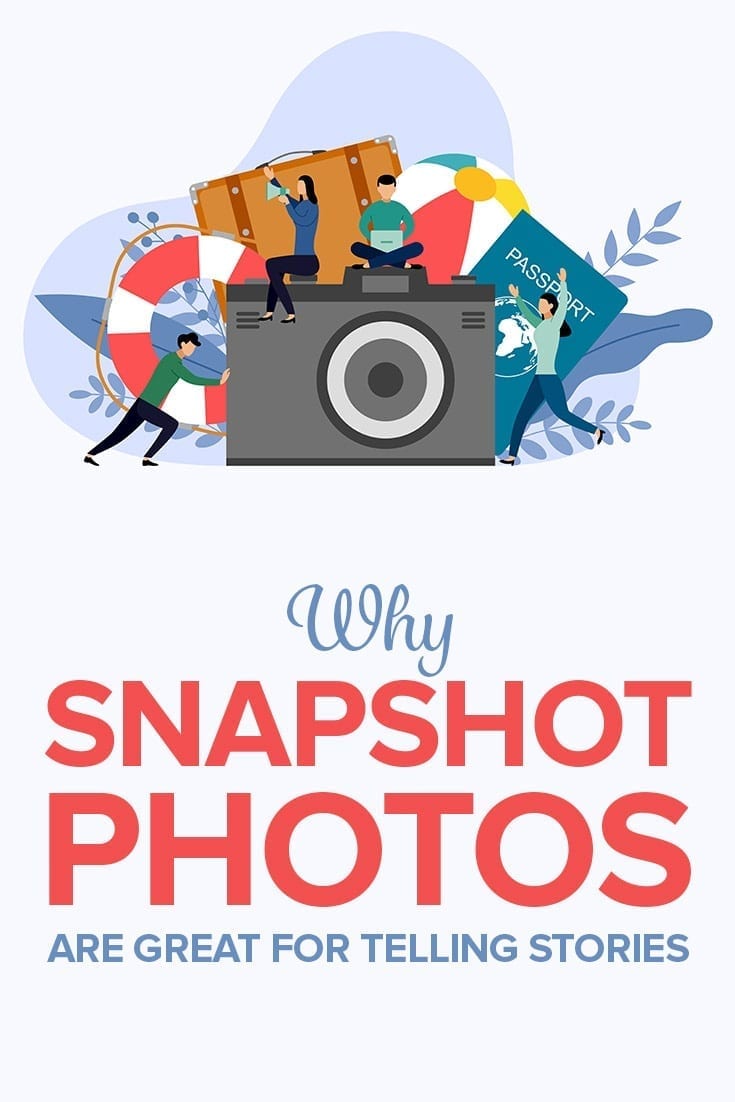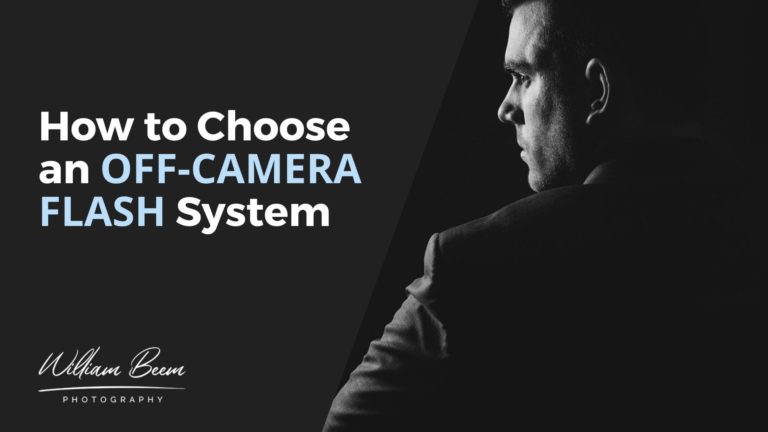Affiliate Disclosure: We earn a commission if you purchase through one of our links at no additional cost to you.
Snapshot photos get a bad rap from most photographers. We spend a lot of time thinking about our photos and how to make them better, so it’s easy to look down upon the lowly snapshot. After all, anyone can make a snapshot. There’s no skill or challenge to making a snapshot.
Yet, I’m here to tell you that snapshot photos have a place that every photographer should appreciate. Snapshots capture moments in our history and tell our personal stories. Maybe the audience for a snapshot isn’t as large as for some of your other photos, but they may capture the moments that mean the most to you and your family.
What Are Snapshot Photos?
Snapshot photos are basically documentary photos of the moments you experience.
It’s a casual photo taken in the moment because you want to save a memory. We tend to think of amateurs taking snapshots, which is why some photographers tend to look down on them.
However, you can’t stage every moment that could be a memory you want to save. Snapshots tell your stories of life. They could be any moment experienced by you or your subjects, which is exactly why they’re great for telling stories.
You don’t need fancy equipment to take a snapshot. Any camera will do, and they’re often taken by rather small cameras because those are the ones we can easily carry from place to place.
Snapshot Photos Matter
The idea for this episode came when my mother shared some of her old photos with me. Every one a snapshot, as she never did anything else with her photography. Mom was the one who kept our family history.
We got the photos because my daughter wanted to see what I was like when I was young. In other words, she’s interested in my history and this is something we can share.
However, I got something else in the bundle of photos that I didn’t expect. It was a short photo story of one of my father’s adventures.
I lost my father to a brain tumor 17 years ago. There are a few keepsakes and a portrait of him with my mother on the mantle, but a few of these snapshot photos really hit me pretty hard.
Dad was someone that seemed fearless to me. So I wasn’t surprised to see him in a few photos going parasailing. I knew he did it, but I wasn’t there when it happened. It was after I’d moved out of the house an was on my own. My parents were on vacation and it seemed like a good opportunity for him.
My mother only took half a dozen photos of his event. Yet they told the story. Everything from him getting geared up to his take off, flight and landing.
There’s not a single photo here that would win a prize. One even has some random man’s knee blocking a quarter of the frame. They don’t really show my father in a flattering way, either.
Yet I love every one of them. They let me see my Dad doing something different that made him happy. There’s a story in these snapshot photos of his adventure, from start to finish. I finally got to see him doing something that I wasn’t able to see in person, and I love every one of these photos.
Don’t let anyone tell you that snapshot photos don’t matter. While they may not have any interest to a broad audience, these photos brought tears to my eyes. I got a chance to see my father again, being the man I always knew him to be.
Snapshot Photos Let You Be Part of the Moment
As photographers, we’re often separated from the things going on around us. When we put a big plastic and glass camera up to our eye, we’re literally out of the picture. We aren’t participating in the event. We’re capturing it for others who can’t be there, or for the memories of other people who were participating in the moment.
That’s why people hire us for weddings, sports, concerts and other events.
We typically don’t get to be part of the story. There’s where snapshot photos are different.
You can be part of the story and snap a selfie with your friends. You don’t have to lug a large camera around and seem different from everyone else. Instead, you can pull a small camera out of your pocket, capture the moment and you haven’t missed out while you plan the next photo for your audience.
I can have as much fun as any photographer capturing photos, but there are times I noticed that I’m not having as much fun as everyone else around me when I’m photographing an event. Let’s be honest. It’s work.
The guy shooting a concert isn’t getting the same experience as the fans enjoying the show. Sometimes you just need to be part of the crowd who enjoys what’s happening around you. Snapshot photos allow you to be part of the moment.
How to Take Better Snapshot Photos
All of the rules you know about photo composition still apply to snapshots. The difference is that you place more emphasis on getting the shot than worrying about its perfection. Life’s precious moments won’t wait for you to get everything just right. You have to accept the possibility that a snapshot photo isn’t your finest work, because that’s not the point.
So while my mother has some random guy’s knee in the photo series about my father, I don’t care. I can laugh about it, but what I’m really doing is paying attention to what’s happening with the subject – my father. I can forgive a lot of technical and creative problems as long as I get to the meat of the story.
There’s only one imperative with snapshot photos – capture the memory that tells the story.
Nothing else matters if you miss the purpose of the photo.
Tell the Story
That’s the reason for your snapshot photo in the first place, isn’t it? You want to tell the story of something happening, or where you are. So that’s what you need to think about. What’s happening now and what’s going to happen next? Those are the things you need to get in your camera.
When you tell the story, see if you can get different perspectives of your subject. Most people take their snapshots while just standing in the same place. They never think about their angle of view. So get low angles of view. Hold the camera over your head and shoot down. Do something to put the camera in a different place than your normal viewpoint.
Get in close for some details. Take some wide angle shots to get the big picture. See how other people are reacting to what’s going on around you. Don’t fixate on just one thing and take every shot from the same focal length or angle.
Essentially, work the scene as best you can.
Keep it Clean
If you can avoid distracting elements, avoid them. Remember how I mentioned some random guy’s knee in one of the photos? Try to avoid that if you can.
Get familiar with your location and look for distractions. Look for opportunities to find a clean background instead of a busy one. Try to avoid a lot of clutter in your shot.
Remember, those are the ideal things to consider. However, it’s more important to get your moment than miss it because something wasn’t just right. The idea is to see if you can take better photos, not miss the photo.
Anticipate
Sometimes a snapshot is just having a person stand in front of something. It’s a bit of a manufactured memory, but no less important than any other memory. They tell a story.
Other times, you’re actually trying to capture some event in progress. This is where anticipation comes into play. What are you going to see next? Where do you need to be in order to capture that moment?A sense of anticipation can make all the difference in capturing an event in motion or completely missing out on the action.
You can’t anticipate everything. That’s why we have surprises. However, a little anticipation based upon logical deduction can give you an edge. Use your ability to look ahead to see what could possible happen, which direction things could possibly go, and then see if you can just wait for the moment to unfold in front of you.
Now that’s a great snapshot!
Get a Photo Scanner
Now that I have a collection of my mother’s snapshots, I’m worried about preserving them. Our digital files won’t fade, but those old film snapshots won’t last forever. I can see that a lot of these photos faded over time.
They’re not going to last for my family if I don’t get a photo scanner and convert them into digital files. If you want to preserve your snapshot photos, find a way to scan them. Film fades.
These are your memories and stories. Make sure you do everything you can to protect and preserve them for your future generations.















Awesome Post Dude
I Will Try To Do Yours Tips